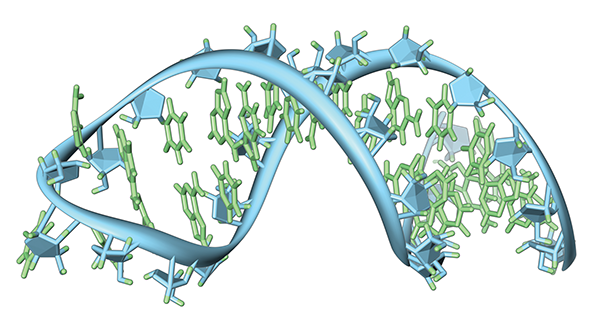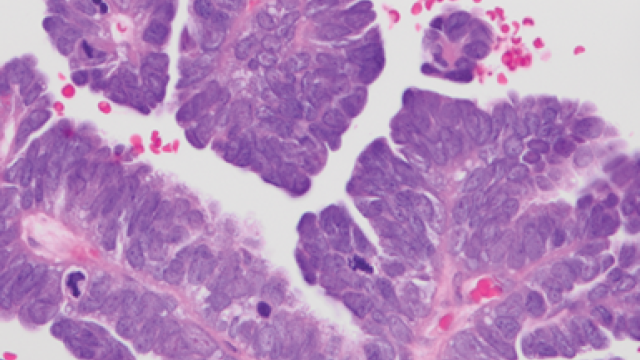RNA, once thought of as a simple go-between from DNA to protein, is now recognized as one of biology’s most versatile molecules. Interrogating the RNA biology of cancer will uncover new diagnostic and treatment strategies.

A hairpin loop from a pre-messenger RNA. An RNA hairpin loop is a fold in a strand of RNA which serves as a key building block for many secondary RNA structures.
Credit: Wikimedia Commons
RNA, once thought of as a simple go-between from DNA to protein, is now recognized as one of biology’s most versatile molecules. As such, interrogating the RNA biology of cancer will uncover new diagnostic and treatment strategies.
It is now well appreciated that only a small fraction of RNAs inside human cells encode the genetic instructions for building proteins. A myriad of other types of noncoding RNAs have been implicated in a wide range of functions.
These roles range from providing structural scaffolding, to helping organize DNA, activating signaling molecules, silencing specific genes and boosting gene activities. Many of these species of RNA are important contributors to health and disease.
In cancer, various noncoding RNAs are dysregulated, which in many cases is suspected to drive tumor growth or metastasis. Close correlations have been determined between patient outcomes and levels of certain long noncoding RNAs in their tumors.
The CCR RNA Initiative focuses on developing a comprehensive program of cutting-edge research into the roles of RNA and RNA-protein complexes in cancer. It seeks to foster synergistic interactions and cross-disciplinary collaborations among a wide range of RNA scientists and clinicians within and beyond NIH.
Some noncoding RNAs make their way into the bloodstream, presenting unique opportunities to diagnose disease, inform treatment decisions and monitor patients’ response to therapy with a simple blood test. Individual RNAs or RNA profiles may therefore be useful diagnostic tools to help determine the best treatment approach for the individual patient.
As a clearer picture emerges of which RNAs are most relevant to cancer development, it will be possible to use RNAs as potential therapeutic targets. One promising area is the development of short pieces of synthetic RNA as cancer treatments.
These molecules, known as antisense oligonucleotides, can be designed in the laboratory to bind to specific RNAs inside cells and, in doing so, activate or turn off RNAs. In some cases, antisense oligonucleotides can be used to block the production of proteins that are required for certain cancers to grow.
To fully take advantage of RNA-controlled events in the clinic, it will be critical to deepen our knowledge of fundamental RNA biology. New methods of analysis, such as tools to determine how RNA folds into its three-dimensional shapes and how those shapes influence their function, will provide unprecedented insight into RNA behavior, their role in disease and guide us to this new therapeutic frontier.


